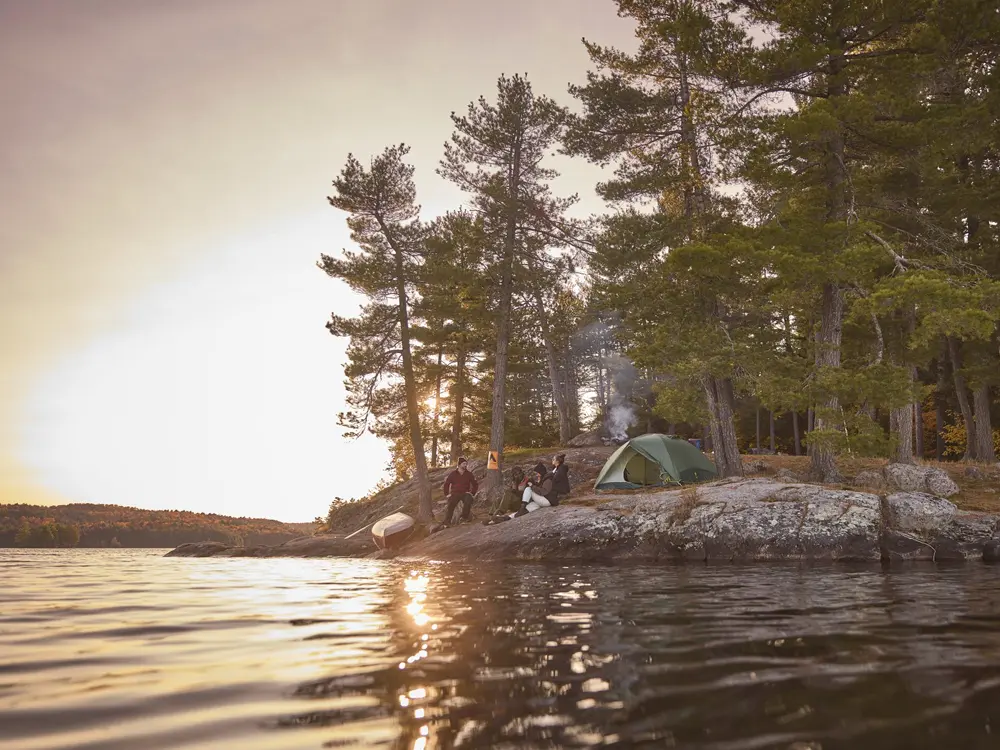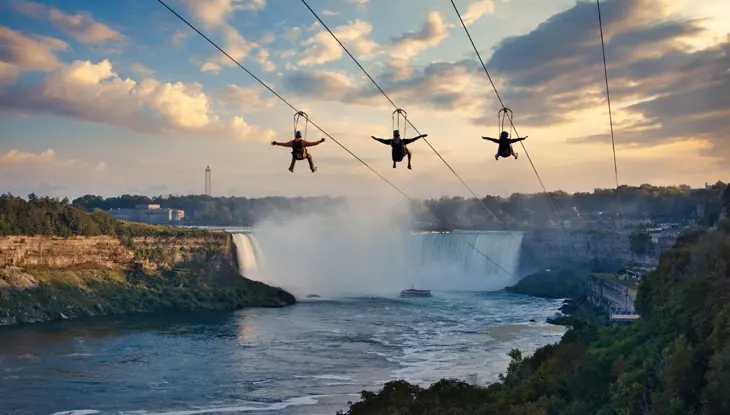Point Pelee National Park
Point Pelee National Park is one of the smallest national parks in Canada, but it more than makes up for its size in what it offers visitors. Encounter a great variety of flora and fauna, especially birds, in the forests, marshes, savannahs and beaches.
Point Pelee National Park is the most southern national park in Canada, as well as its most ecologically diverse. It’s also one of the premier spots in North America for birdwatching, thanks to the park’s proximity to two dedicated migration flyways.
Point Pelee National Park | Destination Ontario
How to get to Point Pelee National Park
Location: 1118 Point Pelee Drive, Leamington
By car: Located in Essex County, Point Pelee is about an hour’s drive south of Windsor. Parking is available on-site.
By transit: VIA Rail provides train service to Windsor. From Windsor, take Transit Windsor to Leamington. Use Leamington’s On-Demand Transit to get to Robson Road and Turn Around Circle. Point Pelee Park is a 30-minute bike ride or two-hour walk south.
Know before you go
Day-use areas, including beaches, are open during park hours only. Park operating hours change seasonally.
Vehicles must be parked in designated parking areas. There are multiple picnic areas, including grills, throughout the park. Dogs much be kept on leash.
Things to do at Point Pelee National Park
Discover more activities and experiences.
Watch the bird migration
Witness the park come alive with the calls and songs of migrating birds. Over 370 bird species have been spotted in the park.
Hike the trails
Explore various landscapes including beaches, savannahs, forests and marshes along eight trails that cover over 14 kilometres.
Paddle the waters
Rent a kayak or canoe to explore the park by water.
Gaze at the night sky
Designated as a dark sky preserve, Point Pelee features millions of stars visible to the naked eye.
Enjoy cozy camping
The campsite at Camp Henry offers 24 spacious shelters with mattresses for six people, a living area, heat and a natural gas barbecue.
Take home a piece of Point Pelee
Stop by the Visitor Centre and Nature Nook Gift Shop to purchase a unique souvenir, including toys and books that support Canadian parks.
Articles and itineraries
Get ideas and inspiration for your next trip.

Interesting facts about Point Pelee National Park
“Pelee” comes from the French word “pele,” meaning bald. Point Pelee is on a landmass that juts 15 kilometres into Lake Erie. This odd-shaped peninsula was formed over time by sediment deposited along the beach and now the area is full of marshes and forests.
The area became a Canadian national park in 1918, and in 1987, it was named a Ramsar site under the jurisdiction of the Ramsar Convention, which promotes the conservation of wetlands.
Point Pelee beach is 20 kilometres long, making it the longest continuous beach in Essex County.
Accessibility Features
Ramps
An inclined plane that allows wheelchair users and others to access buildings and navigate between different levels.
Wide doorways and hallways
A sufficiently wide, hard-surfaced, unobstructed path to allow for easy travel.
Automatic doors
Main entrance doors and other accessible entrances and exits are power assisted to allow easy access.
Accessible seating
For persons using mobility aids, accessible seating is available in all areas or levels for persons using mobility aids. The path to the accessible seating should be barrier-free so a person using a mobility device can access it. Reserved space with a clear view of the event/activity for someone who is seated, good sound quality and adequate maneuvering room for a mobility device.
Easy access electrical outlets
At least one electrical outlet is within easy reach and has clear floor space in front for charging an electric mobility device.
Accessible outdoor eating area
Places located outside where members of the public can sit at a table and eat (for example, outdoor food courts at amusement parks or picnic tables in parks). This includes accessible tables with enough clear space around and under so that people using a wheelchair or other mobility aid can easily access. Also, the ground leading to and under the accessible tables is level, firm and stable.
Wheelchair and/or mobility devices available
Mobility devices such as wheelchairs, walkers, canes or mobility scooters are available for people to borrow or rent at the business. If you make wheelchairs or assistive devices available to the public, it is important to make sure that they are properly maintained and periodically serviced so they are in good working order and do not present a safety risk.
Support persons welcome
By law, you must allow a person with a disability to be accompanied by his or her support person while in the areas of your business that are open to the public. A support person is an individual hired or chosen by a person with a disability to provide services or assistance with communication, mobility, personal care, medical needs or with accessing goods, services or facilities. If you charge an admission fee at your business, you must let people know you charge an additional fee for a support person.
Service animals welcome
Can be identified by visual indicators (such as a vest or harness) or documentation from a regulated health professional confirming the animal is necessary due to a disability. In Ontario, service animals are allowed in all public spaces unless otherwise prohibited by law. A service animal is not a pet; it is trained to perform tasks to assist a person with a disability, such as guiding individuals with vision impairments, alerting to sounds for those with hearing impairments, assisting during seizures, retrieving items, or helping manage psychiatric and neurological disabilities. There are no restrictions on the type of animal used as a service animal in Ontario. If the animal is not easily identifiable, the person can provide documentation from a regulated health professional confirming the need for the service animal.
Accessible parking space
Accessible parking provides a place for people with disabilities to park and space to get in and out of their vehicles safely. It also provides access to the main accessible entrance and/or any other accessible entrances. Most users of wheelchairs need at least three feet of clearance to get in and out of their vehicles.
Accessible drop off location
A designated and signed area used for loading and unloading passengers into or out of a waiting vehicle. A passenger drop-off/pick-up area typically should include a driveway, a lay-by for the stopped vehicle close to an accessible entrance and an accessible route from the drop-off/pick-up area to the main entrance. It is important that any drop-off locations are clear of snow and ice or other obstructions.
Accessible vehicles operate on site
Transportation is available onsite and should include handrails, grab bars, and either have low floors or be equipped with a ramp.
Accessible bus/Shuttle services serve site
Accessible transportation is available to help you reach your destination. These may include accessible public buses, taxis or shuttles.
Accessible washroom
At least one washroom stall larger than the others to accommodate adequate maneuvering space for mobility devices. They also include grab bars, transfer space, an accessible door latch, sink with knee clearance, and lever handles or automatic sensor faucets.
Universal washroom
A separate washroom that allows an individual in a wheelchair to use a self-contained washroom facility. They include grab bars, transfer space, an accessible door handle/lock, accessible sink with knee clearance, easy-to-use/automatic faucets, adult change table and emergency call systems. It is also universal, allowing people of any gender to use it comfortably, including with a support person if needed.
Accessible accommodation - Hotel bedroom
An accessible room is designed with adequate unobstructed floor space around all room fixtures (like the bed and closet), the bed at an accessible height for easy transfer and clearance under the bed to slide in a portable lift.
Accessible accommodation - Hotel bathroom
An accessible hotel bathroom should have a tub or roll-in shower, transfer bench, grab bars, handheld shower head, toilet grab bars, maneuvering room by the toilet, an accessible door handle/lock, sink with knee clearance, and lever or automatic faucets for the bath and sink.
Accessible recreation trails
Trails with a firm and stable surface, designed to be accessible for individuals of all abilities. These trails are intended for public use, offering opportunities for leisure and recreation. To qualify as an accessible recreational trail, your site must have at least one such trail that is regularly maintained.
Accessible campsites
Sites should be level with adjacent grades and have a firm, well-draining surface and include adjacent accessible parking. Picnic tables and barbecue pits should be in close proximity to the campsite and wheelchair accessible. A firm surface, roadway or path should also connect the accessible campsite to key amenities, such as accessible washrooms, showers, and other campground amenities.
Last updated: September 2, 2025








